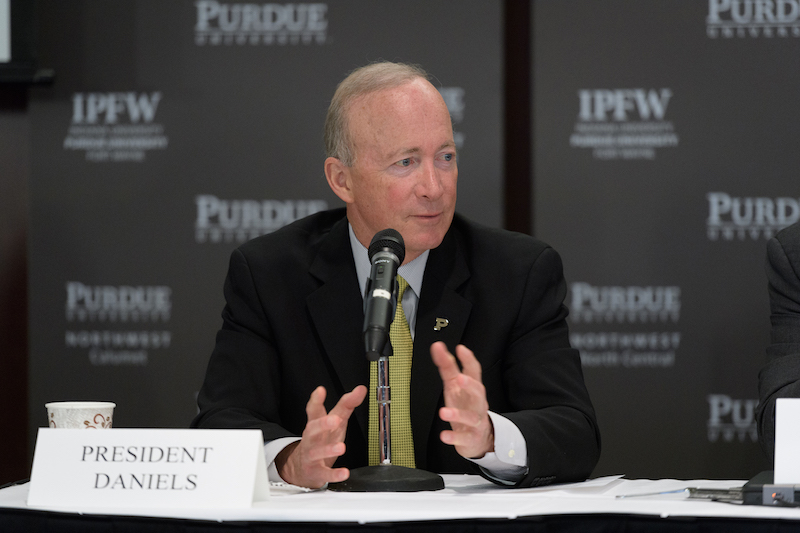What Will it Take for Higher Education to Adjust to Market Conditions?
In our new book, How to Build a College: A Practical Guide for Trustees, Faculty, Administrators and Policymakers, Dr. Joey King and I argue that the sky is not falling around higher education. By and large, colleges and universities are nimble and resourceful institutions, most of which will prosper in the 21st century.
However, college and university operating models that rely overwhelmingly on tuition and debt for their revenue are broken and unsustainable. Change – whether determined internally or forced by outside conditions – is coming.
Many institutions are making changes to adapt to their new realities. The question is: Is this change systemic and sustainable enough to strengthen America’s colleges and universities over the long term?
Trimming costs around the edges doesn’t change campus climate
It’s increasingly clear that college stakeholders are creating new efficiencies and shifting some financial responsibilities across their operating budgets. This a good first step, one that has been going on for at least 20 years at the better-managed institutions.
Further, many colleges and universities band together through cost sharing to develop new efficiencies in programs and operations. But these admirable efforts are first steps. They do little to change campus climate.
Higher ed investments limited by flat or declining tuition revenue
Most colleges and universities report stable or decreasing net tuition revenue. At tuition-dependent colleges, particularly at smaller privates and second- and third-tier publics, the impact is effectively to shut off the most reliable source of support.
At public institutions, the inconsistency and uncertainty of state and local contributions further exacerbate their problem. The effect is to limit investment, except through the issuance of new debt and fundraising, upon which many of these colleges and universities depend to make upgrades that keep their programs and facilities attractive.
Cost and risk of new academic programs can be high
Another solution is to sponsor new academic programs. These programs are often a good idea since many respond directly to local and regional workforce needs. But they incur substantial start-up costs, require a multi-year commitment, and sometimes draw upon already scarce resources.
Fundraising for new programs can help a little. But most colleges and universities will increase the draw from their endowment – if they have one – or turn to temporarily restricted funds to execute and assess their new programs. This can be a solution, but it depends on the quality of the market analysis, the strength of external partnerships, and the commitment from the faculty and staff.
Colleges often sponsor these new programming efforts by expanding the areas of their outreach. Specifically, they build new or expanded continuing education, graduate, and professional programs.
The danger is, of course, that these programs become cash cows of poor quality with a limited shelf life. Unless implemented thoughtfully, they may detract from the mission of the institution and diminish its reputation and standing.
Often staffed by adjunct faculty, many new programs lack the depth of services that supports student retention, especially for traditional students at residential liberal arts colleges. They can be a temporary fix, but they seldom reach their full potential.
Online programs are promising but not cure-all
The newest wrinkle is the push by many colleges to offer online programming. Innovative colleges can make a credible case for online programs. The inflow of cash is desperately needed to build out new academic programs and bolster existing ones that may not support themselves financially. But there are basic concerns that must be diligently addressed:
- Does the college have the in-house expertise to support online programs?
- If not, is their choice of an online partner a good one?
- Can the college compete effectively in a world where large research universities with broad brand recognition play on the same field?
- Is there an opportunity for a cooperative venture between different types of institutions?
Improving bottom line requires re-imagination of operating model
In the end, colleges and universities often face limited choices for improving their bottom lines. It is most likely that some combination of heightened internal efficiencies, cooperative ventures, and a re-imagination of how a college’s operating budget is put together that provide the best recipe for a path to sustainability. This will require two changes at most institutions.
The first mandates a review of how colleges operate.
- Is it possible, for example, to imagine real estate as an asset?
- Can colleges and universities think more realistically about what a fully-owned facilities footprint might look like?
- How much of it can be its own land with facilities operated by third parties that are better equipped to operate in the security, food service, or hospitality business?
Perhaps the more greater challenge is that higher education institutions must look outside their own industry for possible solutions to their current dilemmas.
- What lessons can be learned from other industries facing similarly rough transitions from 19th century program and facilities models?
- Are there new analytical, financial, financial aid, insurance, and student life programs and products that can be developed to suit 21st century needs?
- Can working relationships emerge with new partners, especially on the corporate side, that add value to support well-defined college missions?
- In doing so, does the case for higher education change in ways that resonate better with American consumers while still retaining the underpinning of the liberal arts?
Change is coming. Higher education must shape its future or be washed over by the cultural, social, and technological changes swirling around it. Our bet is that American higher education will find its way.


